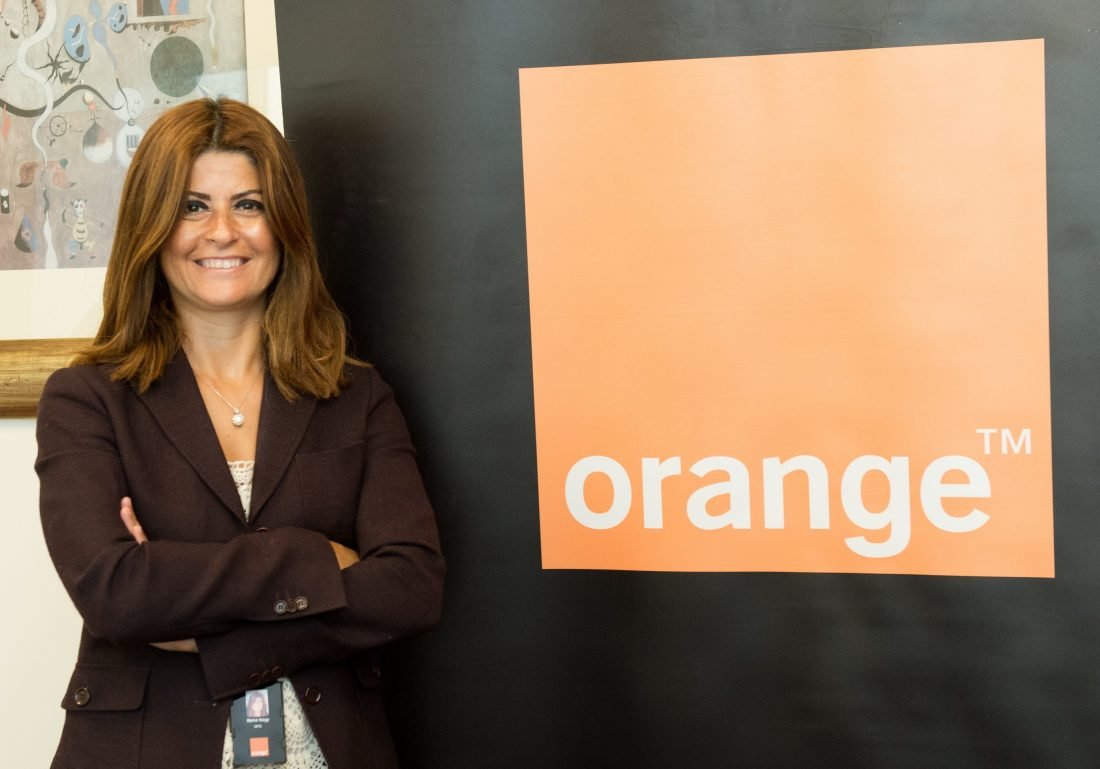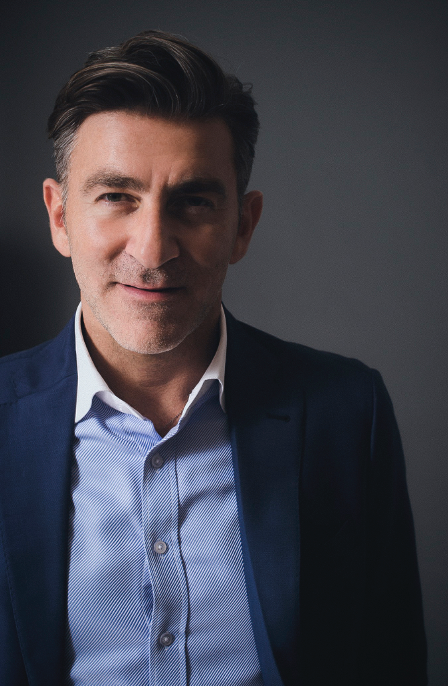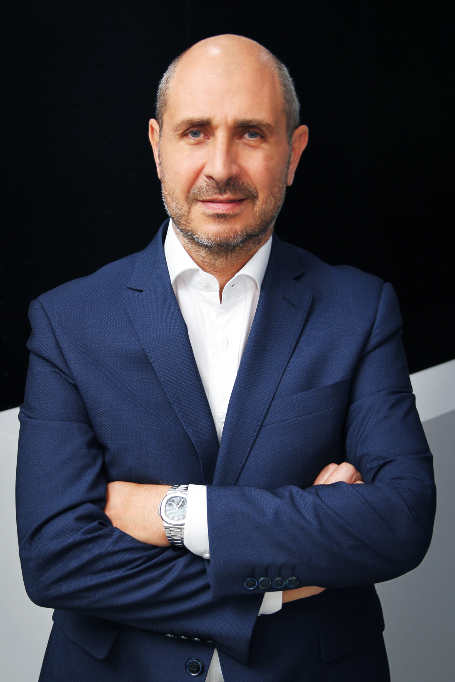2020 is over! Congratulations, you made it to 2021! It has been an exceptionally tough year for humankind. Covid-19 and its aftermath has completely reshaped the ecosystem which brands work in, consumers engage with and agencies service.
Today we’re debuting a Brandberries original ‘Breaking Into 2021: Reflections And Resolutions’; a content series in which we gathered the insightful opinions and reflections of the industry movers and shakers on 2020 and what to expect in 2021 for all communications disciplines; Brand Strategy, Consumer Behavior, Creative Industry, Digital Transformation and Brand Communications.

IKEA
Carla Klumpenar, General Manager of Marketing, Communications and Interior Design UAE, Qatar, Egypt and Oman,
IKEA
In 2020, life at home was unexpectedly disrupted by the coronavirus pandemic for everyone, everywhere! Homes became a sanctuary for the many. We realised and appreciated our space and began to value our relationships with the people in them differently, too.
As the pandemic swept across the globe, people were naturally concerned about their health and livelihood, even in the UAE, and we share that concern. We’ve always understood the importance of a safe place to call home and the role it plays in helping people to thrive. The pandemic also impacted IKEA. This was the biggest challenge we’ve faced in modern times and our priority was the safety and wellbeing of our co-workers, suppliers, partners and customers.
The pandemic also came during planning one of our most important launches of the year – the annual catalogue launch, which is an important driver of our success in the region.
For many years, the catalogue launch has been our biggest event of the year and this year was no different. With families now spending more time together and looking for functional solutions that can help them make the most of their existing space, families started relying more on their homes for refreshment, freedom and imagination. We wanted to showcase IKEA as a brand that has a range of functional products that can help convert spaces and inspire families to refresh their homes. While we found ourselves in difficult circumstances, our goal remained the same – to create a better everyday life for the many people.
We had to adapt overnight, and pivot to new channels very quickly as we had a small window to react. We reframed our strategy towards a more content-centric, digital approach without sacrificing our pre-COVID visibility objectives. Instead of distributing the catalogue to homes, this year we are amplifying its content across several online and offline media channels, such as the IKEA website, social media and advertising.
The IKEA catalogue has had a digital version since 2004. In an ever-changing media landscape this is one way to ensure access to our catalogue to everyone who wants one. Having a digital outlet of the printed edition is a great way of maintaining the heritage and interest of the catalogue, even as printed numbers are decreasing.
For IKEA catalogue 2021, the ePublication was launched on a new platform with a cleaner design of the framework, a more user-friendly interface, and some added functionality for sharing. With the new platform we also secured accessibility that’s up to the latest standards.
The user can flip through the pages in a PDF, like with the printed catalogue, or view page by page. The platform is responsive and suggests view depending on which device is being used. A major change was hot spotting of products in images, so the user can click directly on the image to open product information. From that it’s possible to place the product in a shopping cart that is synced with IKEA.com. Purchases go through IKEA.com as before, but with less clicks and hurdles along the way. It’s a quicker and more direct connection that supported e-commerce even better.
When it came to the launch, we had to, once again, look at overhauling and recalibrating our communications approach based on the new normal we found ourselves in. Physical events are usually a huge aspect of our global catalogue launches, but we had to completely change tact and think of an innovative approach. To address this, we hosted the first-ever IKEA virtual launch which was attended by over 200 people on the day. We also uploaded it onto our YouTube channel to be enjoyed by customers at their leisure and this has been watched more than 5,000 times since launch.
As the pandemic continues, it is important to not lose sight of our long-term commitments. Earlier this month, we took the hard decision of announcing the discontinuation of the annual catalogue. We know from our past that challenges can and will be turned into opportunities to drive change for the better. We will continue to treat each of our four launches across the year in its own special way and extend it to digital platforms. A printed media adds a humanistic element to the IKEA Brand and print has a strength as a slower, more mindful media that resonates well with those that are close to the IKEA Brand. In order to be cost efficient we will continue to create content that goes across media, both online and offline.
Now is the time to also look ahead and lay the groundwork for a positive recovery for people, society and the planet. Our vision, culture and values will guide us, and we will always continue to do what’s in the best interest of the many people.

Cheryl King, Managing Director,
markettiers MENA
In 2021 the gloves will be off in the podcasting world. Spotify and Apple who had long gone head to head in the podcasting wars, have been met with a relative newcomer on the scene: enter Amazon, who joins the scene after recently acquiring podcasting producing platform Wondery for a reported deal in excess of $300 million, making it a big contender to watch in 2021. Alongside other tech giants such as Google, we can expect more major media and tech companies to join the battle for the listener this year.
Why is this important for brands? Well, the latest spending spree of deals by the current major podcasting platforms is fuelling the evolution of how we consume content as we know it; this is creating a significant opportunity for savvy brands who want to capitalise on this still relatively untapped means of engaging with audiences in the region. In 2021, we will of course see more brands experimenting with the format, and why would they not? The metrics for measurement is high and the cost of entry (unlike video) is relatively low. But rather than the tried and tested traditional interview-led format, podcasts this year will become more sophisticated – and innovative – and this is where the MENA region has the ability to be the game-changer.
Fictional storytelling podcasts such as those by regional podcast network Finyal Media are gaining followers in droves, news-based podcasts such as The National’s are providing a new way to get behind the headlines, and content generated from the region by the region is seeing the rise of Arabic podcasts, with the likes of Saudi Arabia and the UAE fuelling the boom. We’ve learnt to communicate differently, remote production is now the norm not the exception, and as we hopefully return to some level of normalcy this year, we will see how the change in listening and behaviour patterns is enabling new formats to grow in popularity.
So, just as we will see brands communicating to their external audiences through audio, we will also see the rise of brands using podcasts for internal comms as well. Already there are some early adopters on the scene, but podcasting for internal comms is still quite a new and underused way to communicate with employees. But in 2021, with the makeup of workforces having fundamentally changed indefinitely and many people still working from home, communicating with people via their smartphone – the one device universal to all – will undoubtedly pave the way for a new form of engagement with staff. This is one that is transparent, albeit controlled, authentic yet measurable, and one that will help build trust and advocacy between each and every employee within the business.
Christine Cherifi: Head of Corporate Communications IMEA

Henkel
The New Now: What we can expect and how the role of Communications is evolving this year?
- Truly embracing flexibility
I am confident that particularly hybrid models of remote work are likely to persist beyond the pandemic. Globally, at Henkel we have a remote working structure put in place for many years now which has been further accelerated last year. Yet when the pandemic will hopefully ease throughout the course of the year, remote work will have earned a permanent place in the employment mix. This confronts us with new challenges: how to manage remote working conditions amid today’s uncertainty, and how to further optimize the hybrid working models of tomorrow – however I am in no doubt that we will be able to adapt to the changing circumstances.
2. Supporting beyond the corporate messaging
When reimagining the post-pandemic organization, we have to accompany leadership in binding our people together with a shared culture & sense of belonging in a targeted and dynamic way – including all employees whether working remotely, on premises, or in combination of both. Thanks to the strong corporate culture and resilient nature of Henkel and its people, we were able to adapt and continue our business operations with minimal disruption. Supporting the business in (re)defining the organization’s values requires the Communications department to further maximize employee engagement through an increased reliance on digital communication channels due to the substitution of in-person meetings.
3. More variety of digital channels & tailor-made content
Since we have to minimize the F2F interaction within the teams but also with external partners, we more than ever rely on our established digital channels, which we are continuously developing. As the basic needs of safety, stability and security of employees are evolving in the next phase of the pandemic, a more sophisticated approach of tailor-made content on digital tools and channels is a must. The recovery will be digital, nevertheless once the health threat of the pandemic vanishes, we expect in-person meetings to become more effective and centered as the quantity increases. Throughout the last year we have already noticed a shift of significance within the PESO model: It has become more difficult to receive Earned media awareness. Hence, building on paid media collaborations or owned channel content has been intensified.
4. Increased focused on social responsibility
Recovering from the COVID-19 pandemic is requiring the continuous support of individuals but particularly global businesses. We very much rely on everyone’s social responsibility. Our strategy at Henkel to provide help with sustainable social projects has been reinforced in the last year. Our commitment to further support the local communities will remain our focus – now more than ever. It will continue being an integral part of our corporate culture. I, myself expect to see similar efforts throughout the range of multinational companies this year.

City Edge Developments
Ghada Shaker, Director, Corporate Communications & Public Relations And Acting Director, Marketing,
City Edge Developments
The world is facing an unprecedented situation with the outbreak of COVID-19, which has taken the world by storm disrupting everyday life and businesses. The communications industry was no exception; with quarantine and social distancing being the widely adopted measures to curb the spread of the virus, the transmission towards a more digitalized world has significantly accelerated. This approach was evident in the communications industry on the consumer and employee levels alike throughout 2020.
In my op-ed on The Brand Berries last December and before COVID-19 hit, I expressed my thoughts on the shift the communications industry would witness as connectivity rates and access to data continue their growth trajectory. Now with the COVID-19 outbreak and as more people tend to stay at home because of lockdowns and working remotely culture, the corresponding shift to digital communications is becoming more and more inevitable. According to a recent report by NTRA, the increase in ADSL usage in Egypt witnessed 92% increase during summer whereas peak hours went up from 3-4 hours per day to 13 hours which is 45% higher than 2019. This indicates the increase in demand on digital services locally .
As far as communications is concerned, keeping an open channel with the various stakeholders is indispensable. It helps sustain customers and employees’ confidence in the brand and reinforces its shared values. On an internal level, it is crucial to keep employees well-informed and engaged to navigate smoothly through such a turbulent time utilizing video-conferencing, virtual gatherings and other online communication tools. On an external level, brands quickly adapted to the reliance on digital services to maintain operations, connect to their customers, and offer more personalized services. Good examples of this would be the expansion in online payment, and online shopping, hosting virtual events, switching communications channels from print media to digital outlets and social media as a response to the change in media consumption patterns.
Think of it this way; the move to digital has provided companies and brands with more insights through collecting data easily and effectively and enabled them to track emerging trends. We now have better access to our customers and their feedback, they can easily express their needs and concerns and companies can fast-track their action plans to address their customers’ concerns and cater to their needs.
The communications industry is a constantly evolving industry. Because of COVID-19, a decade of evolution has taken place in a few months. Personally, I have a positive outlook for the future of the communications and PR industry and the valuable role it will keep on playing as part of the overarching brand positioning strategies. In 2021, I expected the tendency will remain to be more digital than in the past; communicators need to embrace the latest digital trends to stay ahead of the game. Employee engagement will remain a top priority. Triggering innovation and introducing ideas that drive media, customers, and employees will be vital more than ever

Gambit Communications
Jamal Al Mawed, Founder and Managing Director,
Gambit Communications
2021 will be a boom year for PR, as governments and brands put more budget into managing their reputations in volatile times. The increasing polarization of global news platforms will also create demand for PR agencies that can help brands navigate this media scene unscathed.
The tragedies of 2020 forced a lot of people into introspection and a heightened sense of self-awareness and empathy, so I expect to see consumers look for purpose more than product in 2021. This will be most evident in the social influencer scene, where the audience’s frustration with the prevalence of frivolity over the past five years will make way for a more purposeful and value-driven subset of content creators.
The mass redundancies in media in the Middle East, coupled with the closure of many media outlets, has created an unsustainable PR practitioners-to-media ratio, so I expect to see an evolution to proper pitching practices. Agencies will need to compete aggressively with one another to be heard by a shrinking journalist pool and will need to put the work in to give actual value and build stories and trust over time. This can only be a good thing for the professionalism in the industry.”

Khaled Ismail, Vice President Comms – Europe, Central Asia, Middle East and Africa,
Tetra Pak
Will you be sitting on a couch sipping Piña colada in 2021?
My top 8 trends for 2021 (Top 10 would be too predictable)
2020 has changed many things in the world we once knew; digital transformation forced itself on us and disrupted the way we live, love, shop and work.
We’ve been talking about the need for digitalization, remote working and up-skilling for many years, and we were all dilly dallying our way through these ‘back then’ futuristic needs. We were setting 3-5-year plans, putting objectives and KPIs, as we usually do.
Covid-19 turned our lives and our plans upside down. It fast tracked us by 7-10 years, we now know what exponential growth looks like. It has also brought clarity and surprises alongside its chaos and tragedies.
2020, thank you for tickling, pushing, and teaching us a thing or two about what we can achieve, working together.
2021 will certainly be another head scratcher of a year, it will be the beginning of a new era with new ways of doing things, and there is no going back.
Here are my top 8 trends for 2021
1- E-commerce and on-line shopping will be the norm. Everything will now be on-line, even the corner shops and Falafel stands will have an e-commerce portal or App.
2- Business travel will change for good, because with the tools we now have and the habits we formed, we realize that we do not have to travel every other week to do business. Unfortunately for some, the cost of airline tickets will go up.
3- Remote and flexible working will infiltrate our lives and the 9-5 workday will be questioned and the 4-day work week discussion will no longer be laughed at. I expect employment contracts will have to be rewritten or amended accordingly. Bosses will now understand that working from home doesn’t mean sitting on a couch sipping Piña colada, but I hope with less WebEx, Teams and Zoom calls (btw what happened to Skype?)
4- Mental health will be destigmatized, and we will talk about it more freely and openly. Vulnerability will not be looked down on and we will officially accept that it is OK, not to be OK. This past year reminded us of how important our health and mental well-being is – a billion dollars won’t be of any use to us 6 feet under.
5- AI, automation, self-driving cars/trucks and robotics (including drones) will start to actually threaten jobs, but on the flip side, will create many new jobs which we don’t even have a job description for, forcing people to start thinking of their up-skilling plans pronto.
6- Extra mile sustainability – consumers will finally start setting the rules by voting with their pockets when buying sustainably sourced products and packaged goods.
7- 2021 even has its own color called A.I. Aqua (098-59-30), an electric shade of blue. Really…really?
8- Fist and elbow bump greetings are here to stay. A hug and a kiss will have a new meaning and will be reserved for special people in our lives.
In summary, whatever trend wave you ride on, it is important to pause and reflect on what we – the human race – have collectively been through and what we have learnt & achieved together. One thing is for sure, I now have so many new home decoration ideas after checking people’s living rooms on Zoom calls.
Lilian Wissa, CEO

Decorum for Business Etiquette Training and Consultancy
Technology has always evolved faster than humans. Now, for the first time, behavior is changing faster than technology. Remote work has thrust video conferencing to the forefront of communication with both employees and clients. Also, as the older generations have got accustomed to online shopping during lockdown, redefining how brands talk to different audience groups with different motivations will be key. Four key aspects will be forming the trend for 2021:
If brands shift their attention from generating revenue to building strong digital impressions, they will watch their cost to acquire new customers decrease drastically. Anything you can do to take your virtual presence from being spam and pre-programmed scripts to being authentic is so important.
Throughout the pandemic, we’ve all been watching numbers go up and down and it left us feeling we are just numbers. Thus, brands should act smart and show more their human face by personalizing their interaction with their audience. They have to keep in mind their audience’s tone, attitude, and points of view.
Most brands don’t have a sparkling 5-star review across the board online, but still they have to encourage reviews, feedback, and two way communication with customers. Brands need also to readily admit their flaws and shortcomings and be prepared to openly address them with a content strategy that includes a sincere apology and willingness to repair trust.
2-Training Employees on Digital Impressions
If you want your brand to stand out in this new environment where virtual meetings are becoming the norm for team and customer collaboration, you do need to train your people to run engaging, inclusive and effective meetings. Your people need to be trained on the etiquette of interviewing virtually, making introductions virtually, one-on-one video calls, small group video calls and bigger virtual events. They need to be trained on the etiquette of direct messaging, phone calls, and emails as these media will be used more frequent than ever before. Your people need also to be trained to safeguard against the misunderstandings that happen due to lack of facial expressions and body language in the digital world.
3-Employee CommunicationEmployee communication is the glue that holds your business together. It is the key that your employees are aligned with your vision, goals and company values. Without proper employee communication, your people will miserably fail to communicate effectively with your clients.
4-FormalityExtreme formality and seriousness are toning down because of the new Work From Home life style, and it’s predicted that we’ll be soon saying bye bye to Business cards.
In 2021, the connection point between virtual environments, a brand’s authenticity and finding ways to connect professionally, will be what takes brands to the next level. Auditing and improving your brand online doesn’t start and stop with your social media team; it takes your entire company culture and employees to tackle your brand’s digital impression.

Loretta Ahmed, Founder and CEO,
Houbara Communications
We’ve all thrown many predictions out of the window over the last year as we’ve been hit constantly by surprises, most of them pretty unpleasant ones, but also some really enriching challenges that have made us all sit up and really take a hard look at ourselves and our businesses. The curveballs flying at us through the year have made us all better at what we do – more agile, more questioning and more inventive with empathy being as critical as ever – for our clients, our consumers and their changing needs and, most importantly, for our teams.
So, looking to 2021, the huge focus for every brand and institution will of course be its purpose. What is it doing to improve the world? How is its strategy being adapted to meet the new societal realities emerging? The shift to the importance of our wellbeing and the communities we serve is here to stay and 2021 propels it to the centre of every board agenda. The year ahead will see emergency plans switch to long term strategies that deliver action by companies proving a set of brand and product values to customers whose needs have shifted radically. Just be prepared to tweak that strategy constantly and keep a really close eye on your audiences – their needs are changing all the time so think about what they need to hear, not what you want to say.
Defining and sharing a corporate purpose takes rigour and a real commitment and this is more than a trend – it has to be sustained way beyond 2021 – this is the future. It’s going to be the reason people buy from you, talk about you, share your content and relate to you. And if you want to hire the best staff you’re going to have to define it clearly and prove it to them. We’ve all woken up to the fact we simply want to be better people. So we want the companies we buy from to be better also. In the past we’ve focused on what we’re doing to reduce our impact on the planet – and the big trend for 2021 pushes this further into how can our actions leave the planet in a far better place when we’ve long gone. How about that for a positive shift in society and one that is long overdue.

Maha Nagy, Chief Marketing Communications Officer,
Orange Egypt
No doubt 2020 has been a year that taught us a lot, causing Individuals’ interests, habits and priorities to shift and change, as well as affecting brands and fronting them with new challenges and changes, transforming their traditional ways of operating and connecting with consumers. In light of the current ongoing situation, brands have to be agile and quick in adapting to the new trends in order to stay ahead, as well as demonstrate social responsibility towards society and consumers.
2021 is the year to really focus on the customers, and prioritize their needs as well as safety. Brands will move more towards focusing on personalization, in which they aim to become closer to the consumer and increase the emphasis on their needs. True, genuine insights will play a major role in distinguishing which brands stay ahead, as it’s also as crucial to tap into consumers emotions, while avoiding being cliché. Moreover in 2021, brands have to ensure a strong digital presence on various established platforms and not shy away from experiencing with new means of communicating and engaging with customers. It’s fundamental that brands focus more on availing their products and services through digital means, easing the customer experience and ensuring they meet their needs. Companies that will be able to form relationships and stay connected to their customers virtually will be ahead in 2021.
Furthermore the brands that will stand out are the ones that show increased social responsibility, not only with consumers but towards society and employees as well. It’s crucial that brands give more leverage and influence to their social responsibility, by giving back and implementing their duties towards society. Likewise it is important to portray a sense of adapting and acclimating to new means which prioritizes consumers’ safety and well-being. Working from home and functioning virtually were major trends in 2020 that will continue in 2021. The brands that portray high responsibility towards their employees and staff are those that will stand out to consumers as having a high sense of empathy and accountability.
2021 will be a year will brands will have to really adapt and adjust to their consumer’s needs rather than wants, in order to stay ahead and prosper.

Mai Youssef, Corporate Communications and Marketing Services Director,
Canon Middle East, Central and North Africa
Recent events have forced us to re-look at the ways we do everything from how we work to our lifestyle and habits. The pandemic has spread at a fast pace making it one of the worst humanitarian crises the world has witnessed.
With repeated rounds of lockdowns around different parts of the world, there is a lot of strain on organizations as well as their employees. Communication with our audience is of utmost importance during the time of such a crisis. In order to gain trust of the stakeholders, there are four pillars of communications which will help organizations to emerge on top next year.
The first one is effective internal communications. In order to build and further enhance the creditability, organizations need to focus strongly on internal communications. In terms of crisis, we need to reassure our employees, suppliers, and other internal stakeholders about our plans to ensure business continuity. The year 2021 is going to be all about recovery and expansion and we need to make sure that we build confidence in the minds of our stakeholders for ourselves.
The second element is leadership positioning. This has gained a lot of importance during the ongoing crisis and beyond. More than ever, leaders are being closely watched from all angles in their responsiveness and handling of such challenging times. Effective leadership communication must be robust yet empathetic, demonstrating solidarity and caution while offering hope for the future as we finally emerge from the current situation.
Third one is digital engagement. Of course, this trend was in motion even before the current situation, but the necessity to remain at home without face-to-face employee, customer or stakeholder engagement has created a need for a razor-sharp approach to digital communications. Organizations are now ensuring that they are a digital- first company in order to conduct business and engage with the customers anytime and anywhere.
The fourth one of the most important one is community relations and corporate social responsibility initiatives. At Canon Middle East, we have launched several initiatives to build the next generation of creatives entrepreneurs in the GCC region. Aligned with the global corporate philosophy of Kyosei, which means living and working together for the common good, Canon Middle East launched several community focused initiatives recently. The company partnered with the UAE Ministry of Education for digital skills to develop youth talent in the UAE and prepare them with the required skills for the future. Additionally, Canon Middle East also launched ‘Aktashif’, a first-of-its-kind program, to ignite creativity and entrepreneurial spirit among 14 to 24-year-olds in the GCC region.
Communication playbooks and key messages will have to be realigned for 2021 and we need to make sure that empathy towards all our stakeholders in all our messages is a key part of it.

Miki Hirasawa Ashton, Regional Brand, Communications & Development Leader, 3M,
3M Middle East and Africa
Our recently launched megatrends article points towards a world in rebalance and this rings true both globally and here in the Middle East and Africa region too, as we grapple with the post-COVID-19 fallout and renewed acquaintance with Israel and Qatar. International governing bodies are experiencing increasing levels of infighting and relative challenges with the disease. What must we do to keep a steady strategical footing as the world rebalances?
Employee Engagement and Advocacy – we cannot ignore that 2020 brought to light the influence of individuals and their critical ability to transform economies and societies. The demands of personalization and shifting corporate expectations have put exceptional pressure on companies to adapt, leaving many of them vulnerable to disruption by new technologies and business models. In 2021, how we respond to thrive in this new environment is key, especially when those same digital platforms are on the brink of major upheaval. Though individual digital voices have empowered the masses to seek change and demand more from those who serve them, these digital tools are a double-edged sword with society currently confronting the damage done in what many call the “truce for truth.” One way for corporations to address this is through in-house-driven communication to strengthen purpose and the tenets of corporate culture. Most brands have focused on their own people and communities recently in order to maintain strong connections between colleagues working remotely and this will continue apace.
Beyond Brand Resonance: Social Justice – The need to reimagine the function of internal communications has forced many corporate communications professionals to perform feats of agility on shoestring budgets through sheer necessity, redefining a playbook which will be in a constant redrafting state throughout 2021. Nurturing employees through constant engagement in turn translates into employee advocacy, but weekly emailers won’t cut it – build ownable company stories everyone can be proud of, purpose-driven and built around social justice.
Brands needs to be walking the talk of corporate citizenship and take a stance beyond social responsibility for the countries in which they operate. This is how we can translate the global mandate locally into everyday impactful actions. In my view, this is one of the fundamental credentials so essential to any brand & communication strategy.
Partnerships and Strategic Collaboration – Creativity is always at its peak in adversity but can be limited if we do not open to the idea that we could work more efficiently if we went beyond our own corporate world. Why go it alone when a government entity or charity is looking to empower the same stakeholder group? The COVID-19 vaccination is a good example of this. This is also true when it comes to solving more social issues, which is why innovative companies reach out to government or NGOs to collaborate and solve inequity together. Initiatives like 3M’s Science At Home brings kids closer to science as they experience the joys of STEM innovation and discovery when the classroom is closed. The key takeaway for brands is that we need to multiply collective efforts but whilst planning these, we would also need to understand that strategic partnerships need to be dynamic, providing leeway for improvisation and swiftness to always be relevant.

Randa El Sawi, Head of External Communication & Brand,
Ericsson MEA
The year 2020 was defined by an unprecedented challenge with the spread of COVID-19 and its impact on our everyday life. Ericsson actions during this time were aimed at protecting the health and safety of employees, customers and stakeholders in addition to the 24/7 work by network front liners who ensured our networks were always connected in the best manner.
The pandemic highlighted the critical need for information and communication. In today’s digital world, communication plays a vital role in every business. Hence, offering the right communication services to customers based on their business requirements became the need of the hour for Ericsson.
This year, we also saw that working from home became the new normal as mobile networks were increasingly recognized as a critical infrastructure – essential for helping businesses of all sizes keep things running remotely. As service providers recognize that their services are proving an essential lifeline now more than ever, three major trends emerged since the beginning of the crisis:
1. Fixed and mobile telecommunications networks experienced major shifts in traffic as more lockdowns mean a decrease of data traffic in urban areas and an increase in suburban and residential areas.
2. Lockdown puts a dramatic day-long pressure on home connectivity due to work-from-home, online education etc. As people are moving less, and working from home more, the largest share of traffic increases is being absorbed by the fixed residential networks.
3. Videoconferencing, gaming and streaming services are seeing major increases in use. A gaming/streaming boom triggers caps on video quality to keep bandwidth at bay.
During this time, Ericsson continued to stay close to our customers to understand their needs, and we did everything possible to support our customers to maximize their network capacity and performance.
The future of connectivity
While working strictly to local pandemic restrictions, Ericsson continued to deploy 5G globally, cemented its 5G leadership and completed the company turnaround. As the year closed, Ericsson had 122 unique commercial 5G agreements with communications service providers globally, including 77 live 5G networks in 40 countries.
The November 2020 edition of the Ericsson Mobility Report predicts Middle East and North Africa (MENA) will have the highest growth in monthly mobile data usage during the forecast period, increasing total mobile data traffic by a factor of almost 7 between 2020 and 2026. The report also forecasts 130 million 5G subscriptions in MENA by 2026.
5G can enable better user experiences even with an increase in mobile broadband (MBB) traffic, gaming and app usage through use cases such as remote classroom environment with Virtual Reality (VR) and holographic interaction for remote workers.
In the long term, safeguarding and strengthening key digital infrastructures – as well as enabling the continuous development of the underlying technologies such as 5G and AI – will be crucial.
On the other hand, Artificial Intelligence and automation will be essential to restart the supply chains through manufacturing process automation (connected factories, Industry 4.0), reduce human exposure risk in transporting good through connected fleets and self-driving trucks along with a host of other applications.
The COVID-19 pandemic has led to a boom in the use of network-based communication and collaboration tools. Some of these new and improved solutions will play a key role in saving lives, while others will help save businesses, support public health and welfare services, and ease recovery after the crisis.
This has made it easier to see beyond the efficiency-related, economic benefits of digitalization and recognize its broader benefits to society and humanity as a whole.

Robin Gordon-Fairleigh, Founding Partner,
Manara Global
After a year that challenged every brand and corporate to re-examine their strategy and, in many cases, their business model to adapt to a fast-changing and uncertain world, hope and optimism for a brighter 2021 is starting to flicker into focus.
2020 was the year that sent shockwaves of change caused by the impact of the Covid-19 pandemic. It required the traditional communications rule book to be torn up and replaced by more tactical and agile approaches to navigate the immediate steps ahead.
With the rollout commencing of mass vaccination programmes to counter the virus that has spread worldwide, there is optimism for the return of some of the normality that we all took for granted before Covid-19 touched our lives.
For brands and corporates, it means the need to create a new strategic approach to their business with changing objectives more reflective to the needs and priorities for the emerging world before us. Closely aligned to this, will be the need for a newly developed communication strategy that will be more relevant to the needs and reprioritised values of consumers, and reflects bold and compassionate leadership by the organisation and its senior executive team.
In particular, those emerging strongly into this new post Covid-19 era will be those that clearly articulate their purpose, connectivity, and demonstrate bold leadership in their industry, sector and the broader world in which they operate within.
Companies that have defined their clear purpose, embedded it at the core of their operating model, and then live by it, will advance guided by a clear north star towards sustained growth. Purpose-led companies are better equipped to navigate the choppy waters of the sea of uncertainty by drawing on their purpose to act as a beacon of light in which to shape their decision making, galvanising their people towards a clear set of meaningful objectives, and articulating their actions around the positive impact on their communities in which their customers and wider stakeholder ecosystem are operating within.
The need for greater connectivity to the consumer and wider community will be vital as companies seek to grow their business to return to pre-Covid times. To achieve this, it will require more relevant data and insight gathering to better understand the evolving needs, wants, and issues concerning the consumer to better tailor the company’s services, products, and marketing efforts to better resonate with them.
Business leaders should be front and centre in the year ahead leading from the front by articulating clear points of view on the future ahead, shaping confidence towards a more aspirational vision, and showing the relevance of their company, brand, and offer to their stakeholder ecosystem. By stepping up to articulate their leadership in a smart and considered way, they use thought leadership to create opportunities to stand out from the crowd and contributing to their company competitive advantage.
2021 is the year to build strategic momentum toward thriving by understanding the evolving world around us. We need to be more human-centric in our approach in better understanding our customers, articulating an aspirational vision for an improving world, and leading with purpose.

Yiannis Vafeas, Vice President,
Golin MENA
Humans and Businesses have been equally affected by the pandemic. Nobody was expecting it. Nobody was ready for it. The tsunami effect was sudden. The anticipation of the ‘wave’ propelled everyone in a waiting and reactive mode. Without knowing when it hits and when it will end, it was only natural that humans and brands would try to find ways to cope. 2020 has been a year of ‘grief’, experienced in all its stages across every market, industry and corner of the world. But where is ‘loss’ there is creativity. Philosophers, psychologists and the greatest artists are reiterating the message; “Suffering is justified as soon as it becomes the raw material of beauty.” Jean-Paul Sartre.
We witnessed incredible campaigns in 2020; Creativity was fueled by the events. Undeniably, some brands leveraged a great opportunity to innovate, create and shine in times of COVID19; mostly the ones who understood that humans need care and adopted clear, honest and candid communications approach. A simple search online on how brands reacted to the pandemic gives 2.2 billion results. In their attempt to stay ahead of the game, or at least in the game, brands tried to adapt their communications and found ways to relate to consumers during a period, where ‘uncertainty’ was the governing sentiment.
Humans reacted the same way. It was the period where quarantine home videos became the talk of the town suggesting all types of messages… from laughs to advices, from words of compassion to words of wisdom. Everyone tried to find a place to belong in a global discussion.
And here we are; beginning of 2021. A vaccine is around the corner. Humans and brands have started seeing the light at the end of the tunnel as they prepare for the next stage; the post covid era. Once unprecedented times are indeed, precedented. Everyone is wondering if the world is going back to a new normality or just go back to what used to be considered ‘normal’. No matter what the answer is, it would be too early to predict. What should brands do? Is it a time to break rules and disregard trends?
I strongly feel that ‘finding meaning’ should be the way forward. Reflecting and learning from the past gives brands and agencies the necessary ingredients, and recipe, for a creative future. As long as they can find meaning and never lose sight of their vision, their future remains bright. Brands and humans are living ‘creatures’. They develop together and they must relate to each other, even if this means they have to take a minute to stop and think. Whether in survival mode or not, businesses became leaner, faster, cleverer and more productive. It all happened because they stayed true to their vision. We are just some weeks or months away from seeing the trends developing. While all our artificial intelligence tools will give us insights on these trends, it is up to us to write the new chapter of creativity based on solid ‘meaning’, that only humans can give.

Ziad Hasbani, CEO,
Weber Shandwick MENAT
In every challenging situation, there are opportunities. While we all saw – and felt – the negative impacts of the pandemic, I want to focus on some possibilities it will bring for ourselves and for our industry, in 2021. This is because the success of brands, much like communities, lies in their ability to withstand, hope, learn and look for opportunity in challenging situations.
From where I stand, I’d like to highlight four emerging themes to which brands can – advantageously – realign their comms.
First, ‘employee experience’ will be a key theme for organizations in 2021 and beyond. The pandemic put both leadership and employees through a tough test, and opened the eyes of companies to the importance of building resilience. Wellbeing, mental health, and social connectivity to fight isolation are all companions on this road, as is the ability to authentically inspire employees. When it comes to internal stakeholders, organizations must pro-actively connect through frequent communication and support initiatives that show empathy and flexibility for employees and their families.
2021’s workspace will not be the same as the one pre-Covid. In the new hybrid environment, we will actively reinvent the ‘employee experience’ to meet evolving and diverse needs and expectations of our people, from induction and technological reliance, to connecting them to the organization’s corporate culture, and enhancing and protecting their feeling of belonging.
Second, all things digital will become ‘traditional’. Conferences, forums, launches, and press activities will be digital – before eventually transitioning to hybrid – as new interactive meeting and live stream platforms emerge. Audience insights will become more accessible and precise, and that will be an opportunity to build more robust and informed comms strategies, narratives and messages. Integrated campaigns will become digital at their core, with the old traditional tools staying on as add-ons. Identifying right audiences will become more precise and personal, based on each person’s profile and behavioral patterns.
Third, the ‘purpose’ of a brand’s existence will take centerstage. We will watch how brands move away from ‘sometimes’ empty messaging to conversations on brand roles. During the pandemic, some brands succeeded in finding a role for themselves in communities; the challenge for brands now, is how to continue and stay close to the hearts and minds of stakeholders. It will be insufficient to simply hashtag ‘#inthistogether’. Instead, it will become necessary to meaningfully communicate how and what is being done to grow through – and hopefully out – of ‘this’ together. Actions will drive messages and narratives, rather than the other way around. Consumers will engage with brands that can not only articulate their values, but also activate those values, and live by them.
Finally, content will be ‘king of kings’: having been a priceless commodity and centerpiece of engagement – regardless of form and format – content will continue to take on a more personal and informal tone, and even the strongest brands will have to adopt a humbler voice. Content will connect all business units of an organization – marketing comms, sales, internal comms, influencers. Videos will be used more than ever before, and content will be developed with an audience-first mindset, relating to current circumstances, by telling stories where audiences are the heroes.





